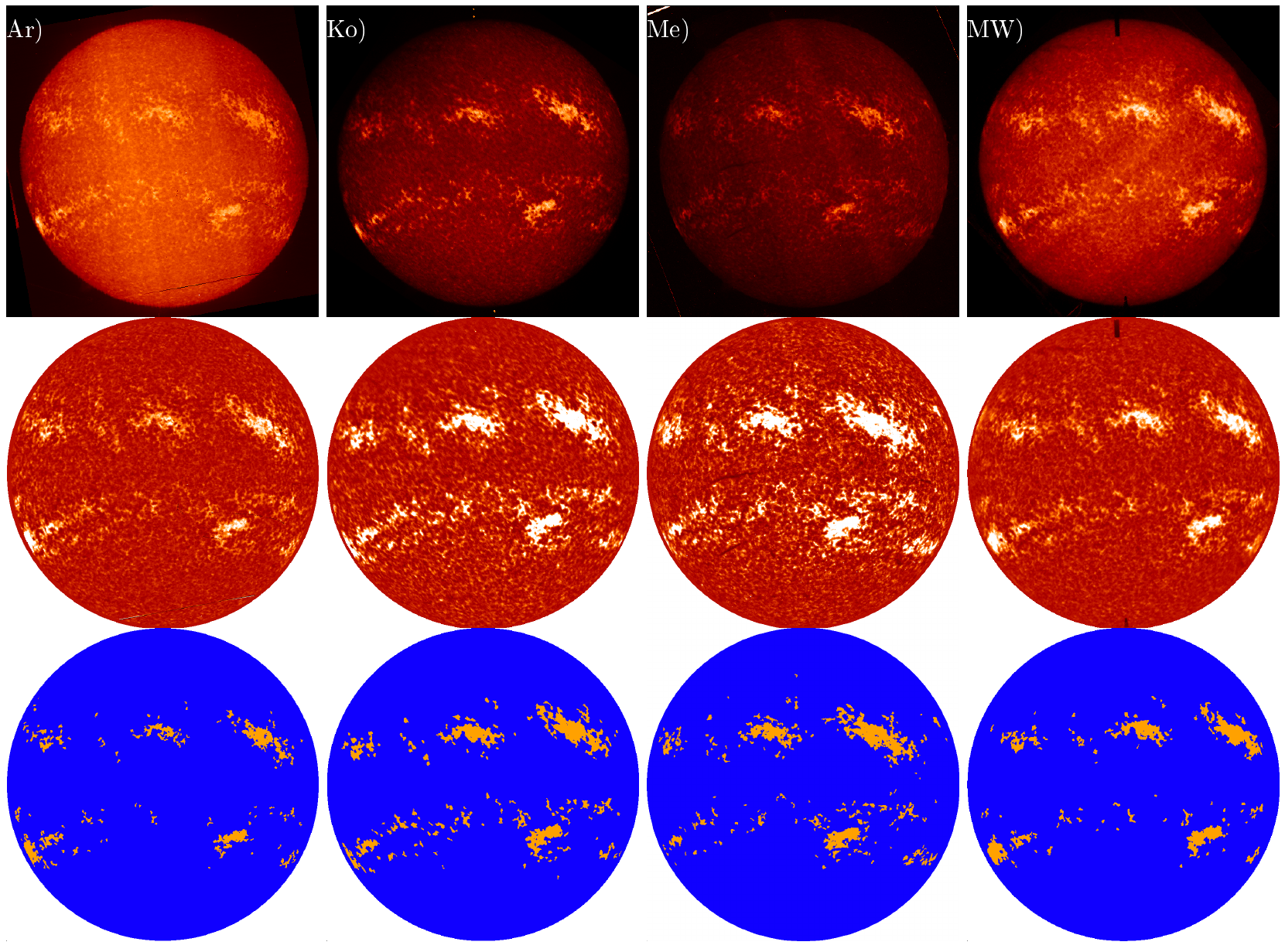Understanding solar irradiance can help Earth's climate studies. A new post in #TheScienceofEST series by Dr. Theodosios Chatzistergos, from INAF-Osservatorio Astronomico di Roma (Italy) and the Max Planck Institute for Solar System Research (Germany), explains it all!

Ca II K images from the Arcetri, Kodaikanal, Meudon, and Mt Wilson observatories taken on 01/03/1968 (29/02/1968 for the one from Meudon). Shown are the original images (top row), calibrated and limb-darkening compensated images (middle row), and maps showing the identified plage regions (bottom row). Credit: Chatzistergos et al., 2019, A&A.
The radiant energy from the Sun is the primary energy source to the Earth. Thus, knowledge of the solar radiative output is of crucial interest to Earth's climate studies.
Direct measurements of solar irradiance (which is the spectrally integrated energy flux per unit area at the mean Sun-Earth distance) are available since 1978. They show that the total solar irradiance varies by about 0.1% in phase with the solar activity cycle, with sometimes even stronger fluctuations on time scales of days. On time scales longer than a day, the variability is driven by the solar surface magnetic field, observable in the form of dark sunspots and bright faculae/plage.
The record of direct irradiance measurements is clearly too short to understand the solar impact on our complex climate system, which calls for reconstructions of past irradiance variations with the help of models. While state-of-the-art models reproduce over 90% of the measured irradiance variability, reconstructions of past variability require suitable long-term proxies of solar magnetic activity.
Historical full-disc observations of the Sun in white light and in the Ca II K spectral line showing sunspots and facular regions are, thus, an invaluable source of information on past solar magnetic activity. Stored on photographic material and obtained with different instrumental set-ups changing over time, these data, however, require careful analysis and understanding of the physical processes in order to reliably convert the information from the photographs into stable long-term proxies of the solar magnetism.
By revealing the nature of magnetic fields on the Sun, the sensitive high-resolution observations taken with the European Solar Telescope will help us to understand these physical processes, and thus improve our knowledge of the past solar activity and its influence on the Earth's climate system.
